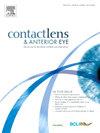基于角膜地形图的人工智能辅助配镜方法提高了角膜塑形镜配镜的成功率。
IF 4.1
3区 医学
Q1 OPHTHALMOLOGY
引用次数: 0
摘要
目的:基于角膜塑形术(OK)后角膜地形图的理想结果,开发了一种创新的角膜屈光治疗(CRT)机器学习算法,以研究人工智能(AI)辅助角膜塑形术(OK)配镜的精度。方法:回顾性分析797例行CRT晶状体置换术,晶状体集中良好,晶状体形态完整的正能量环。综合AI模型包括球面屈光、角膜屈光度、偏心率、角膜散光、水平可见虹膜直径、上下指数、表面不对称指数、表面规则指数和8mm角膜索高差。简化后的人工智能模型省略了后四个参数。比较了人工智能预测与厂商常规透镜拟合方法预测透镜参数的相关性和差异。结果:人工智能预测参数与最终排序参数总体无显著差异(p < 0.05)。结论:与常规方法相比,人工智能预测的晶体参数差异较小,精度提高,具有提高CRT OK晶体拟合效率和精度的潜力。本文章由计算机程序翻译,如有差异,请以英文原文为准。
Artificial intelligence-assisted fitting method using corneal topography outcomes enhances success rate in orthokeratology lens fitting
Purpose
Based on ideal outcomes of corneal topography following orthokeratology (OK), an innovative machine learning algorithm for corneal refractive therapy (CRT) was developed to investigate the precision of artificial intelligence (AI)-assisted OK lens fitting.
Methods
A total of 797 eyes that had been fitted with CRT lenses and demonstrated good lens centration with plus power ring intact in their topography were retrospectively included. A comprehensive AI model included spherical refraction, keratometry readings, eccentricity, corneal astigmatism, horizontal visible iris diameter, inferior-superior index, surface asymmetry index, surface regularity index and 8-mm chordal corneal height difference. A simplified AI model omitted the latter four parameters. Correlation and disparity in predicted lens parameters between the AI prediction and manufacturer’s conventional lens fitting method were compared.
Results
There was overall no significant difference between AI predicted parameters and the final ordered parameters (p > 0.05). The horizontal return zone depth (RZD1, p = 0.022) and vertical return zone depth (RZD2, p < 0.001) values suggested by the conventional method were significantly lower, while the horizontal landing zone angle (LZA1) was significantly larger (p = 0.002) than those of the final ordered lens. The AI predicted parameters were significantly correlated to those of the final ordered lens (p < 0.01), with the correlation coefficients of base curve radius (BCR), RZD1, RZD2, LZA1, vertical LZA (LZA2) and total lens diameter (TD) being 0.958, 0.708, 0.773, 0.697, 0.654 and 0.730, respectively, for the comprehensive AI model. The correlation coefficients were higher in RZD2, LZA1 and TD with the AI model as compared to conventional method.
Conclusions
Compared with the conventional method, AI predicted lens parameters exhibit less disparity and improved accuracy, with a potential to facilitate more efficient and precise CRT OK lens fitting.
求助全文
通过发布文献求助,成功后即可免费获取论文全文。
去求助
来源期刊

Contact Lens & Anterior Eye
OPHTHALMOLOGY-
CiteScore
7.60
自引率
18.80%
发文量
198
审稿时长
55 days
期刊介绍:
Contact Lens & Anterior Eye is a research-based journal covering all aspects of contact lens theory and practice, including original articles on invention and innovations, as well as the regular features of: Case Reports; Literary Reviews; Editorials; Instrumentation and Techniques and Dates of Professional Meetings.
 求助内容:
求助内容: 应助结果提醒方式:
应助结果提醒方式:


